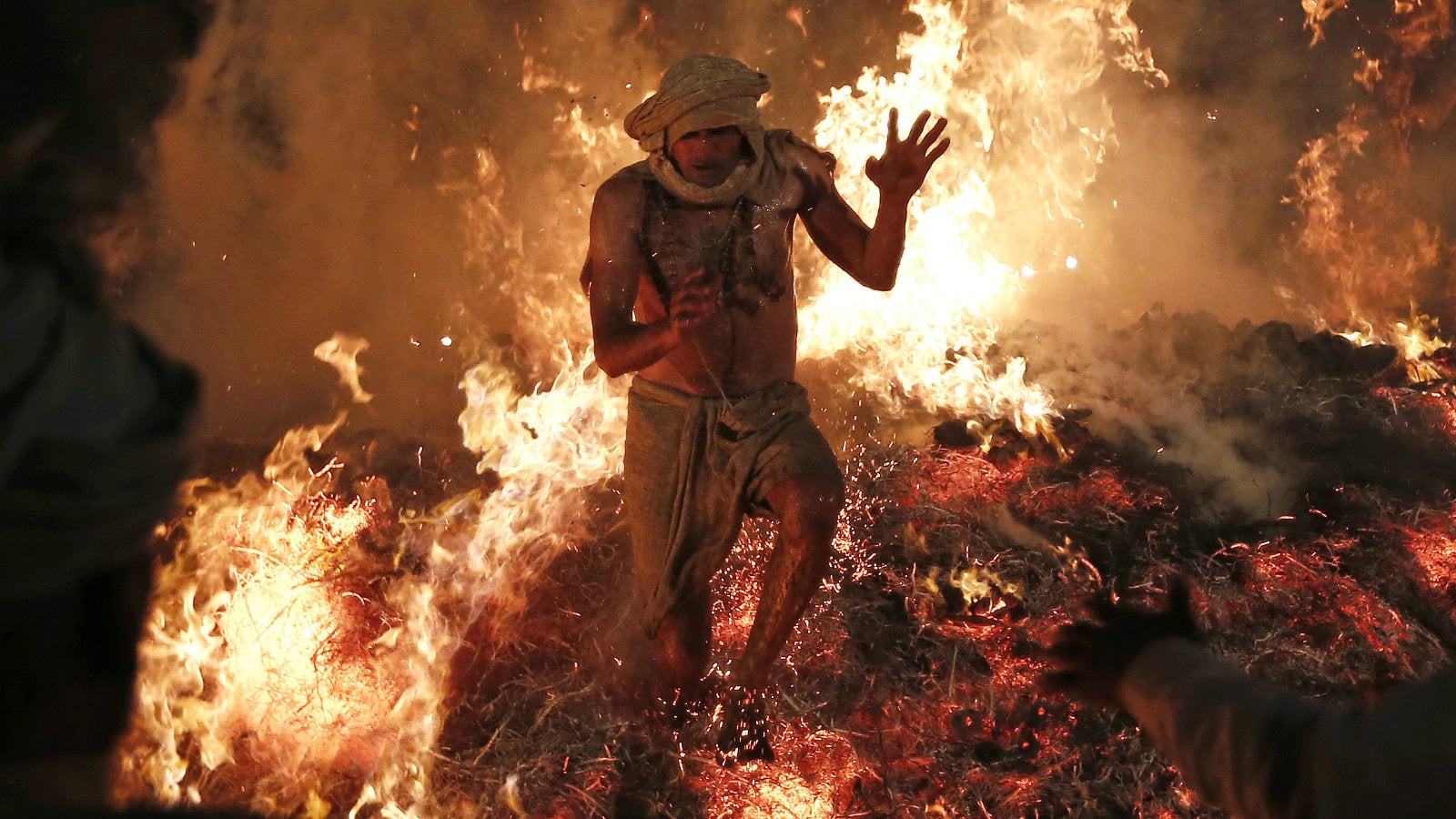The new Indian fetish: posting videos of one’s own barbarity on Facebook and WhatsApp
(Editor’s note: Some of the videos posted here are disturbing. We recommend readers’ discretion in viewing them.)


(Editor’s note: Some of the videos posted here are disturbing. We recommend readers’ discretion in viewing them.)
Moments before he lifted the whimpering mongrel and flung it from the terrace of a three-storeyed building, Gowtham Sudarshan smiled for the camera. As the dog hit the ground, yelping, he was heard laughing.
Twenty-three-year-old Sudarshan, a medical student in the southern Indian city of Chennai, was later arrested, along with Ashish Paul who video-recorded the atrocity on July 4. In case you were wondering, the dog survived, still trustingly wagging its tail at the rescuers.
Meanwhile, another widely-watched video shows a man—as yet unrecognised—approaching a monkey with some eatables. As it gulps down handsful of the snack, the man lands a savage slap on the unsuspecting simian. The force throws the animal a few feet away before it flees in terror—squeals of laughter in the background.
Sordid disaster selfies and horrific mishap videos are passe. Videographing one’s own brutality, and not forgetting to let the world know about it, is what gives some Indians the kicks now.
Increasingly, their victims are fellow human beings.
Lessons in depravity
Last month, India witnessed an upheaval among the Dalits, a community deemed untouchable till 1950 when untouchability itself was banned. The outburst followed the public flogging of seven persons in Gujarat state’s Una town for allegedly killing cows. On July 11, politically-backed goons tied these hapless men to a vehicle and ruthlessly thrashed them with sticks and batons for nearly five hours.
“It wasn’t enough for them to just thrash the Dalit boys. They had to video-record it using their cellphones and spread it via WhatsApp,” said Manjibhai Kalabhai of the Navsarjan Trust, a Dalit rights organisation based in Ahmedabad, capital of the western Indian state.
Such has been the backlash that prime minister Narendra Modi, after his month-long indifference, was forced to speak up on Aug. 06 against such vigilantism.
However, it is doubtful if the excoriation will help. For, such sadism seems to be part of a larger phenomenon fuelled by multiple factors such as technology, media coverage, instant fame or infamy (if only momentary), and the tacit approval of authorities and political leaders.
“Violence against the weaker sections of the society has always existed in India. Earlier, such news would remain limited to the village and community as violence in itself was largely shunned by the value system,” said Gaurang Jani, professor of sociology, Gujarat University.
“But now, with the government mechanism failing at the grassroot level, people have come to realise that there will be no major repercussions. So people flaunt it. Violence, in a sense, is becoming mainstream,” Jani said.
In fact, in some parts of India, the perversion is even commercialised.
“In shops across UP, right under the nose of the police and the administration, rape videos are being sold in hundreds, perhaps thousands, every day. Depending on the ‘exclusivity’ of the clips, which are 30-seconds to even 5-minutes-long, they are priced anywhere from Rs 50 to 150,” The Times of India newspaper reported last week. “Sometimes… culprits involved in rapes or assaults take videos of the crime and post them online,” it said.
Such is the brazenness that the perpetrators and their supporters even proudly identify themselves in such videos.
A few months ago, Amit Singh Rathore, a local goon in Surat city, and his accomplices barged into the hut of a couple of immigrant Muslim labourers from the state of West Bengal. While thrashing them and making them abuse Prophet Mohammed, he made sure that there were no doubts about his identity.
In a video of that incident, made by Rathore’s men, he is seen proclaiming his own name loudly and addressing himself as ubharta hua neta or “upcoming leader.” Surat city witnessed clashes and police action on Aug. 01 after this video surfaced. Rathore and his men were arrested later.
These videos, according to Jani, are also the powerful people’s way of telling the repressed communities: “Don’t raise your voice, or this is what will happen to you too.”
It may also be an attempt to get noticed by the political bosses, many of whom have themselves surged in their careers by instigating violence and leading criminal mobs, some observers say. For instance, while the country has been hotly debating the role of cow-protection vigilantes, one leader of the Bharatiya Janata Party (BJP) congratulated such thugs.
In a video that displayed the lotus, the BJP’s electoral symbol, in the background, Telangana state legislator Raja Singh congratulated those who clobbered the Una Dalits.
“Today’s ease of technology, coupled with an ever-hungry media, has fuelled this latest spurt,” said professor E Mohammed, past president of the Indian Association of Clinical Psychologists. Eighty-one-year-old Mohammed is not new to human cruelty, witnessing many such episodes since his childhood in Kerala’s erstwhile feudal society.
“What could explain video-recording is the disappearance of the superego that usually pulls one back from depravity. Blame that on receding social values, which were earlier instilled in people through stories such as that of Raja Harishchandra,” says Mohammed.
Superego is the psychological term for the “ethical component of the personality… its criticisms, prohibitions, and inhibitions form a person’s conscience.” And Harishchandra is a legendary Indian king who embodied values such as truthfulness, generosity, and kindness.
Evidently, some Indians are far removed from these. They are busy cornering a few “likes” and the limelight.
We welcome your comments at [email protected].